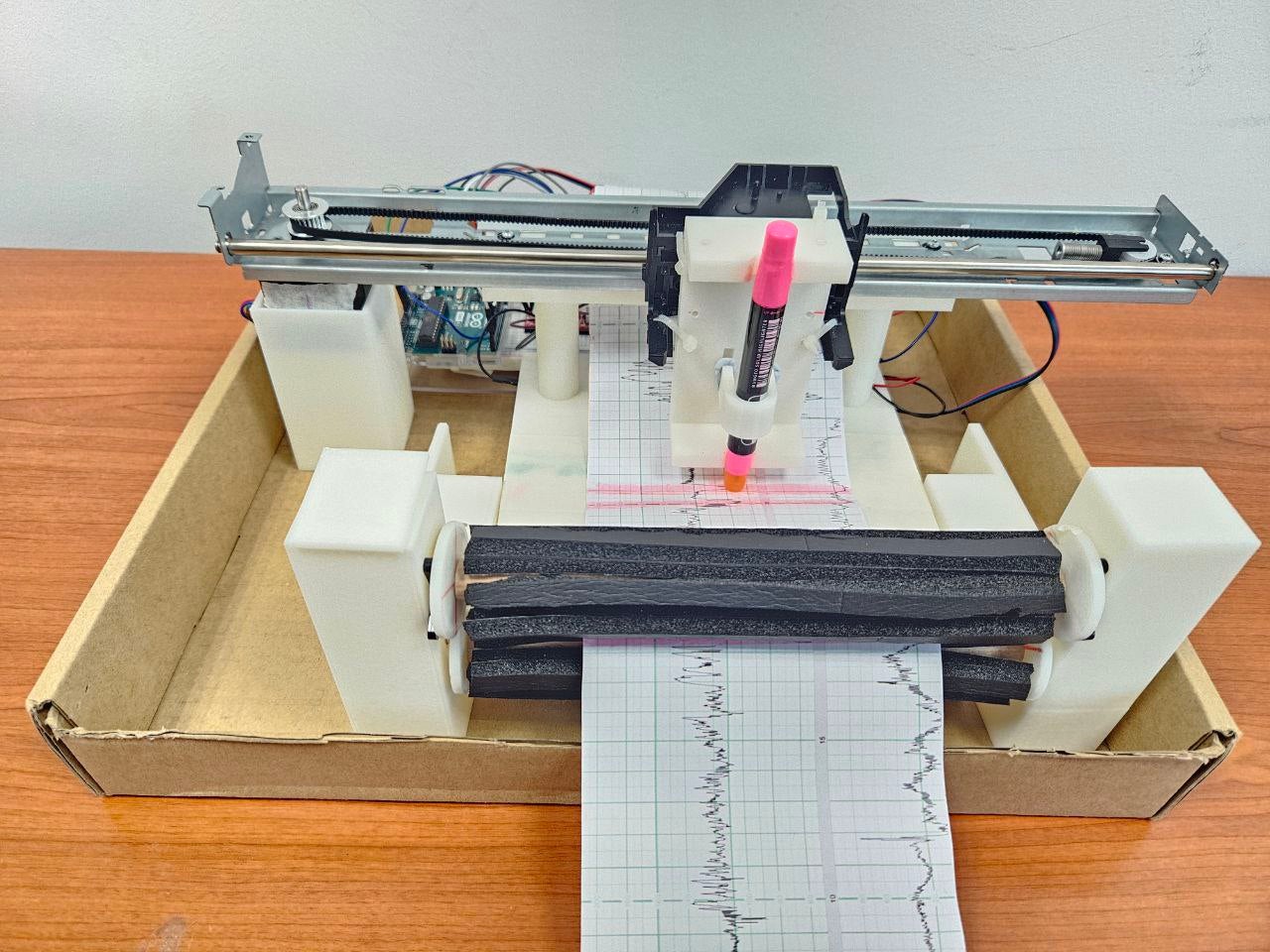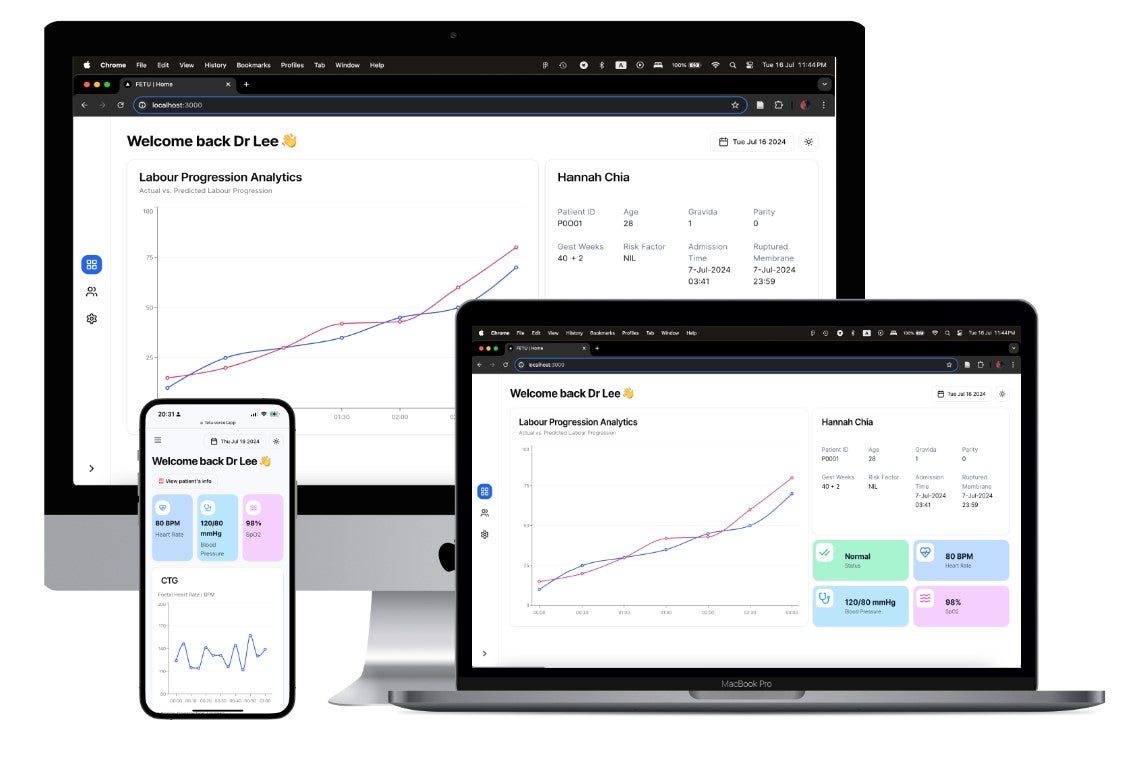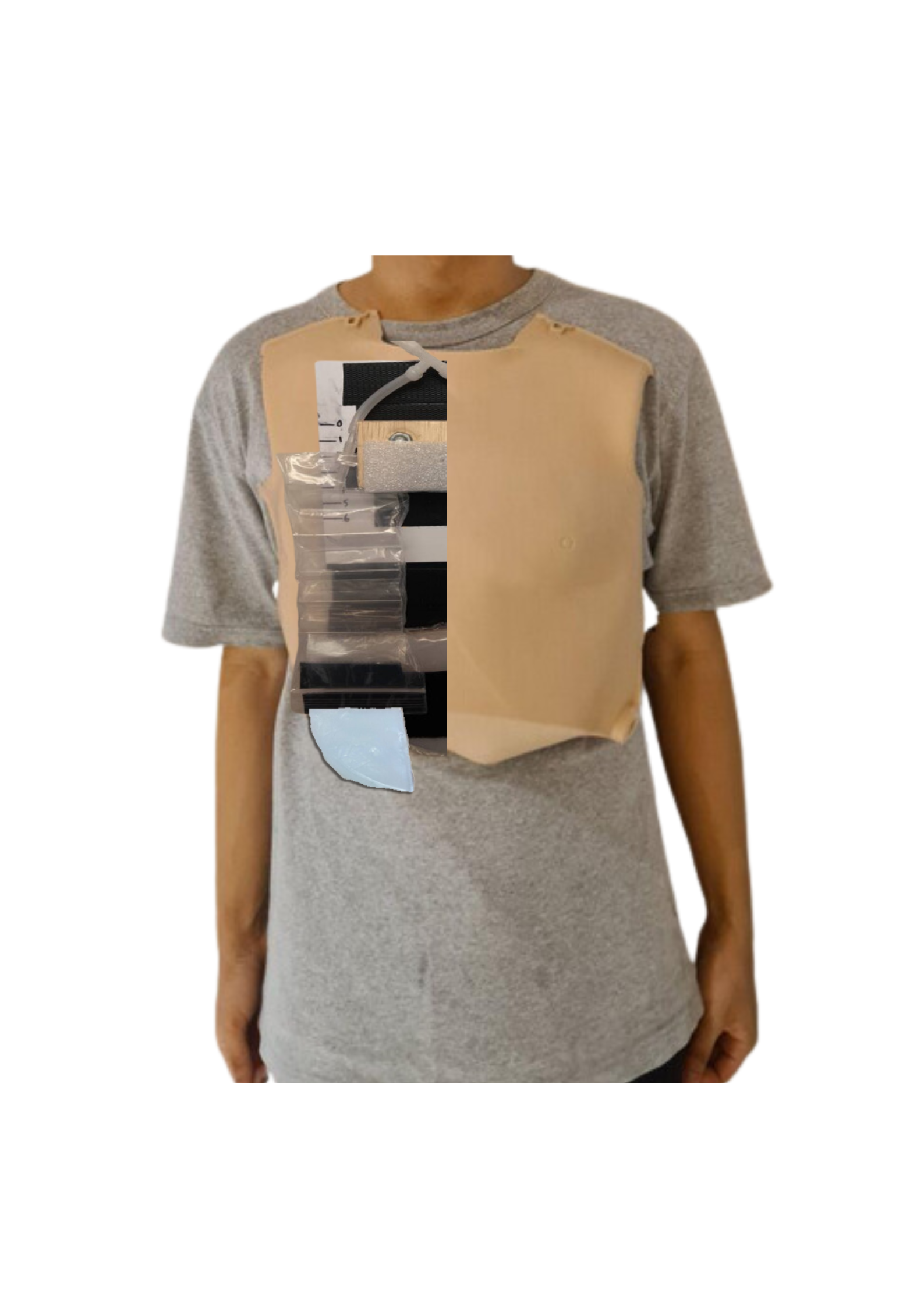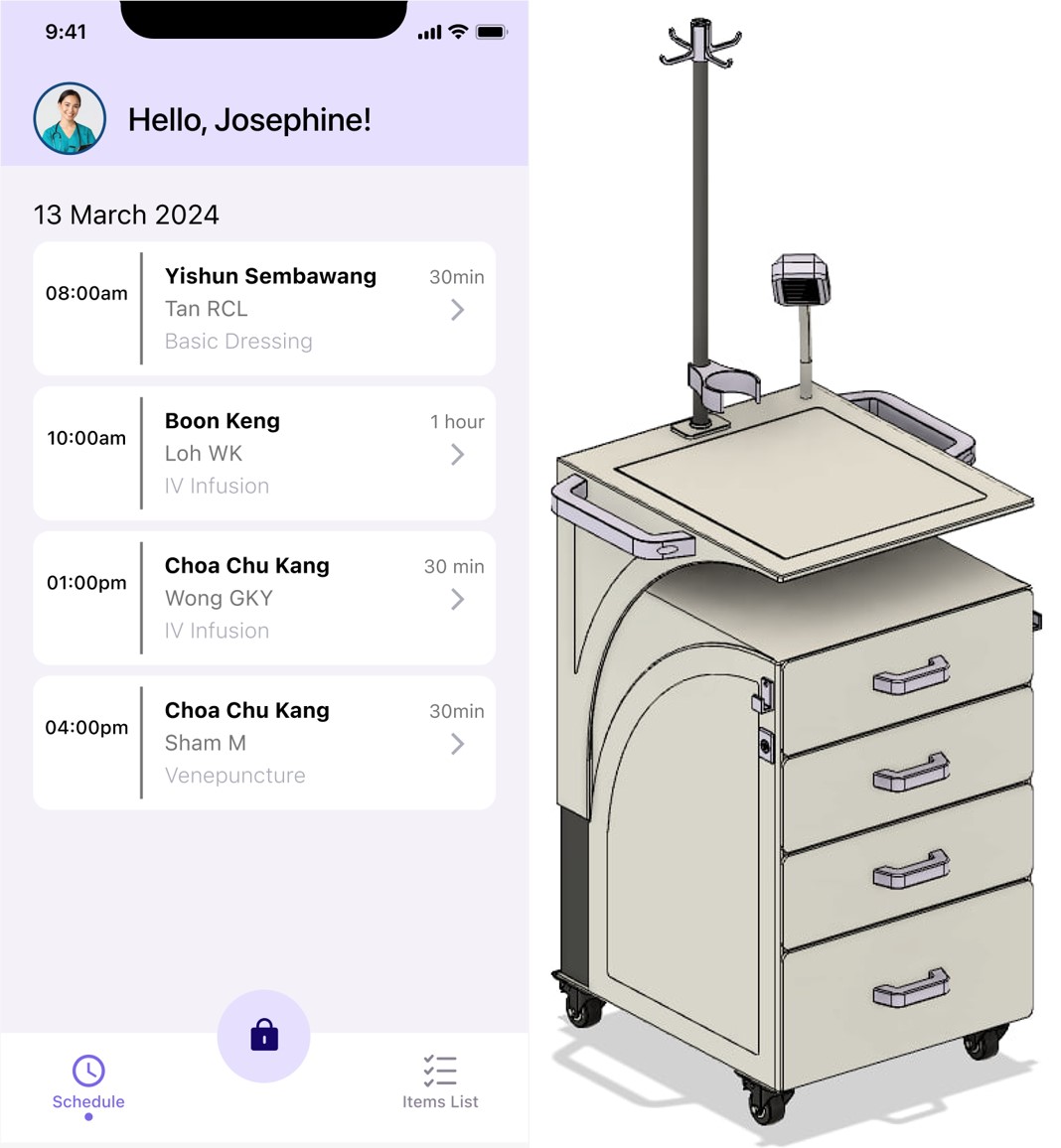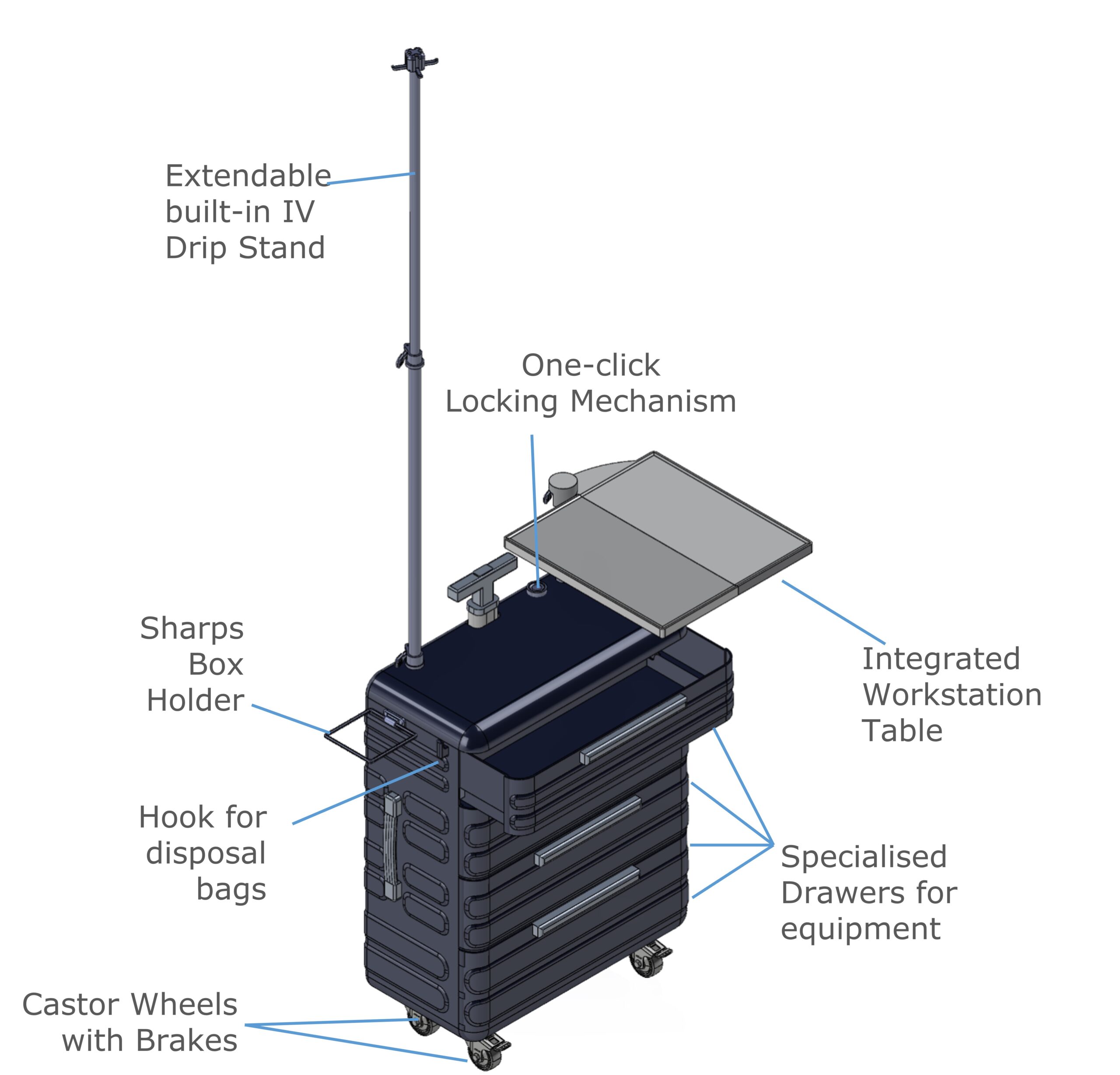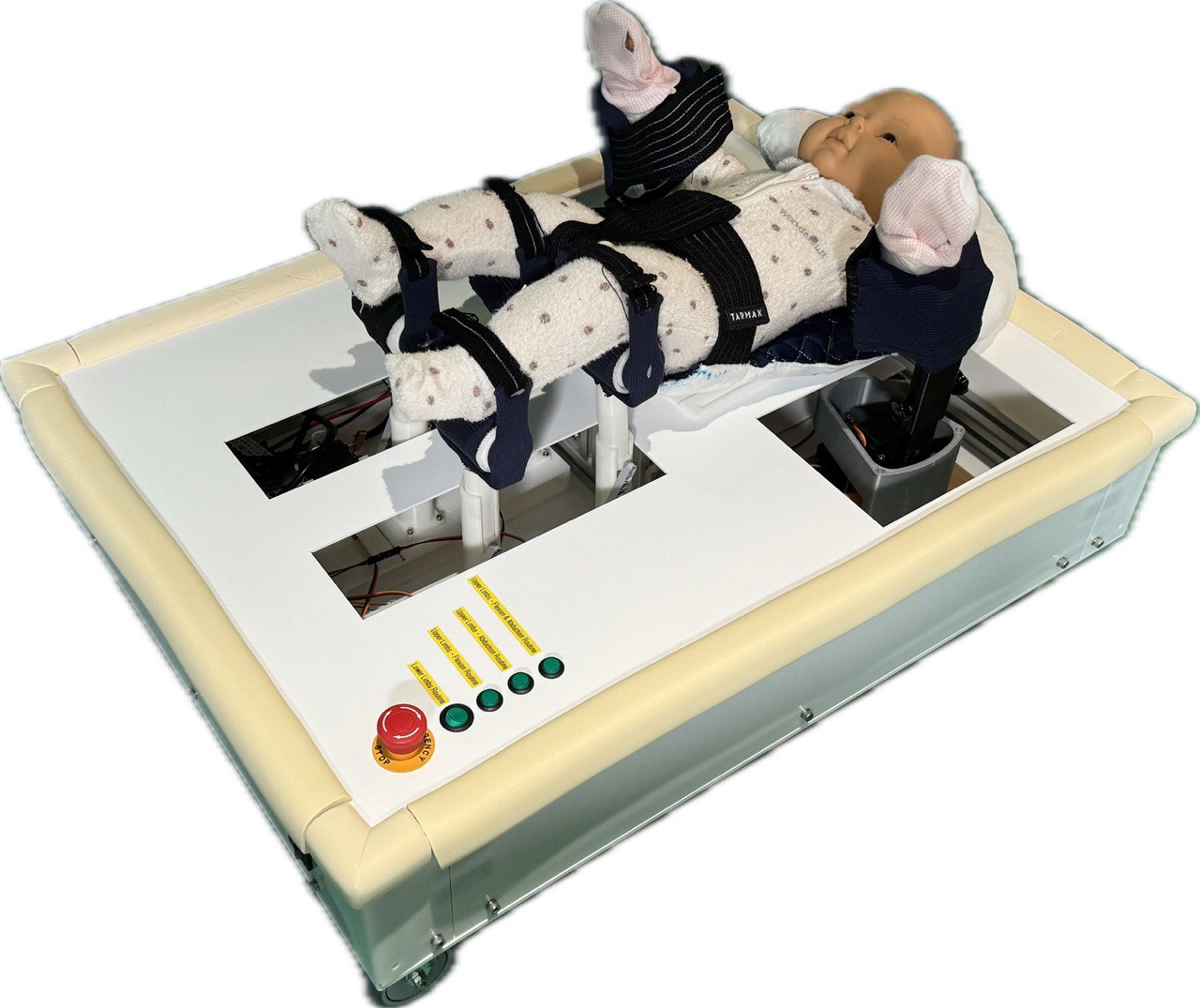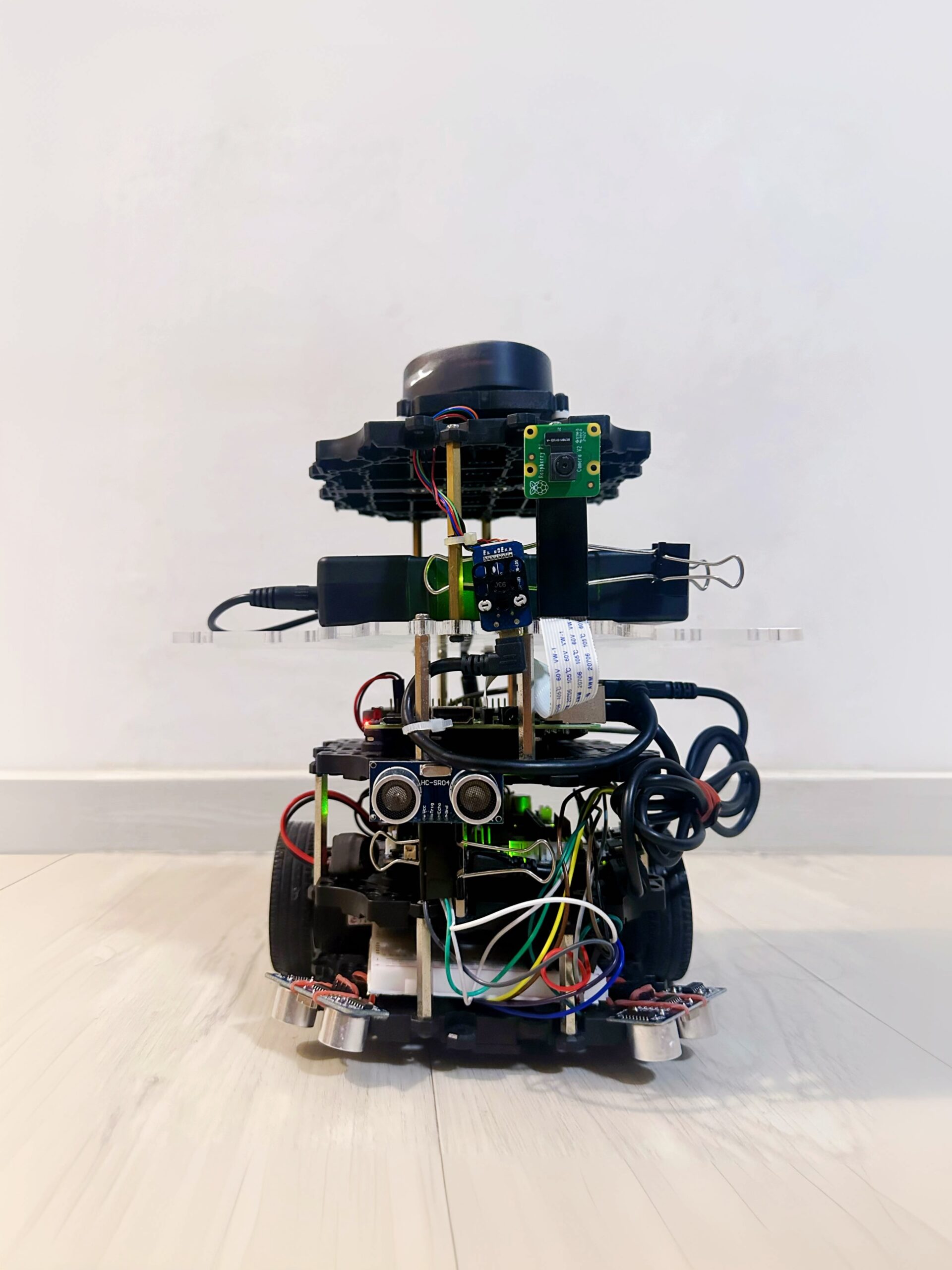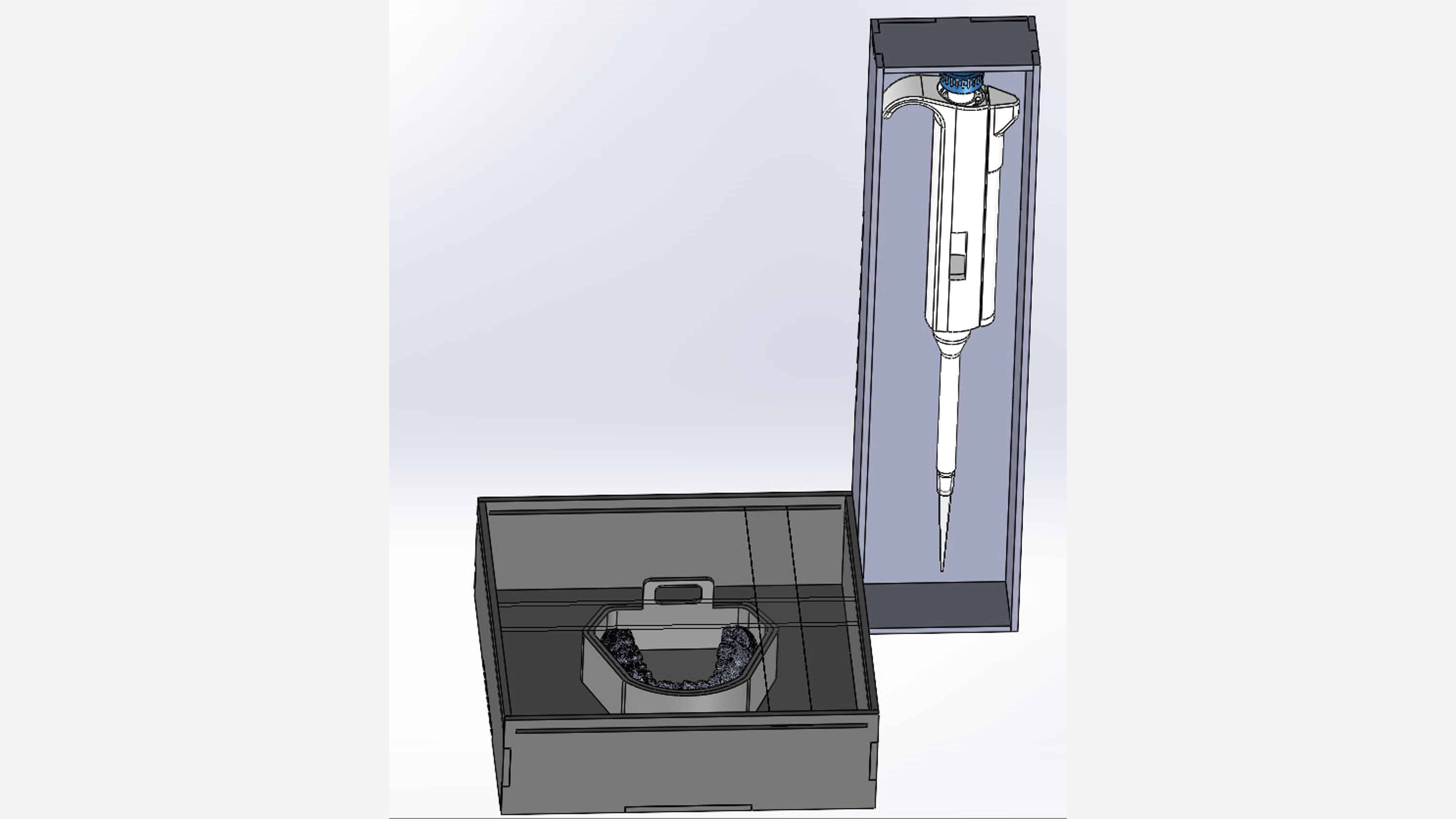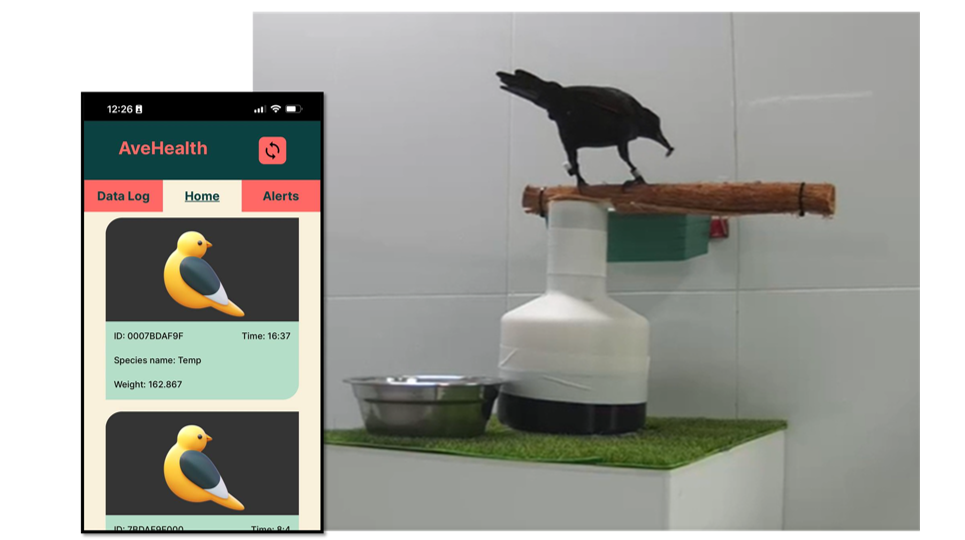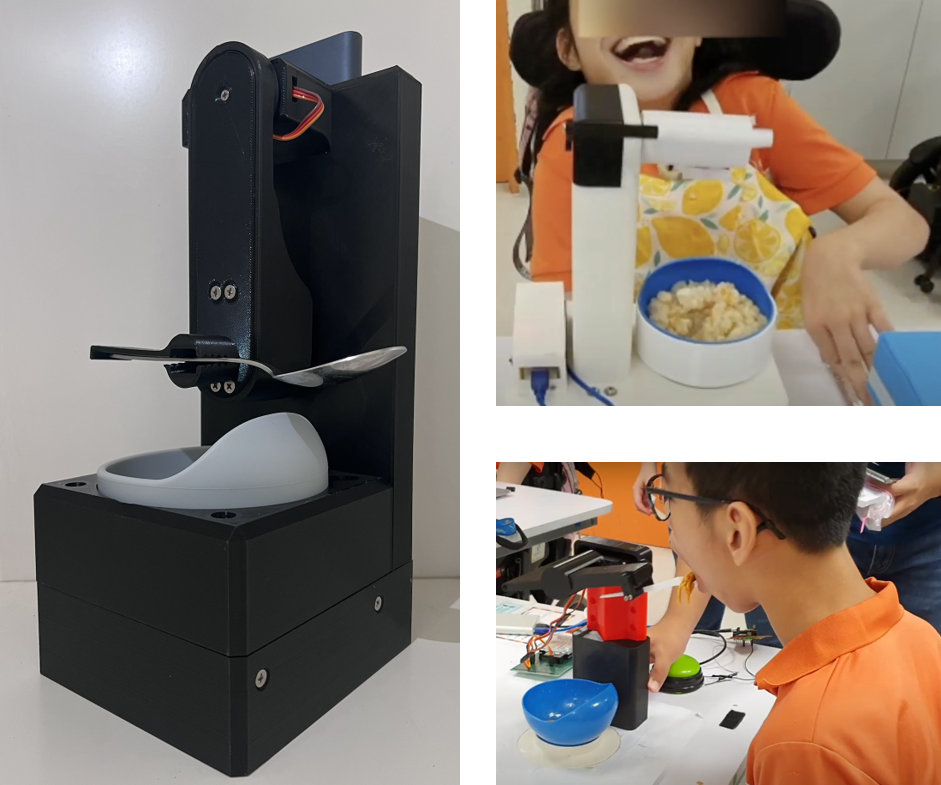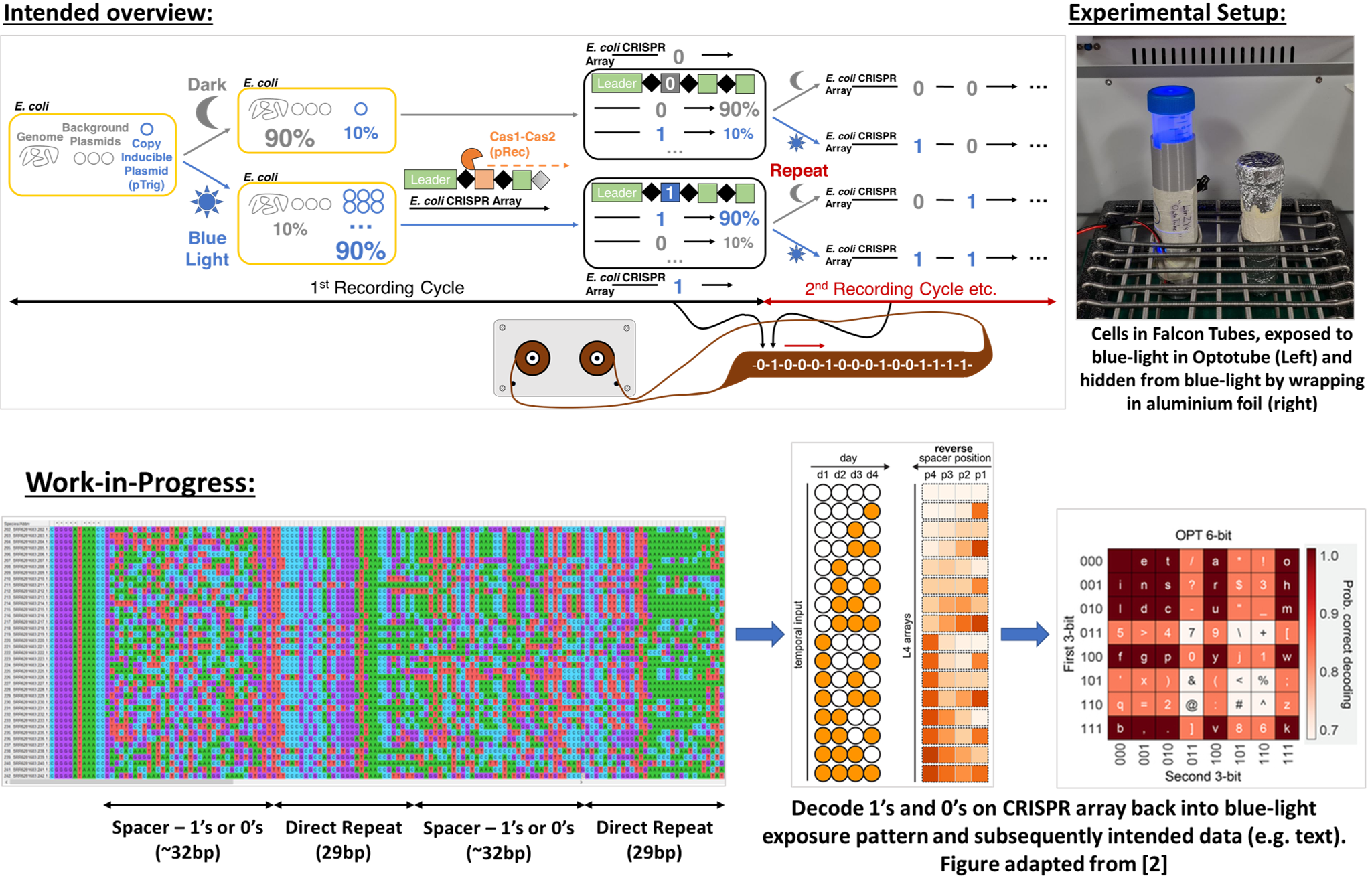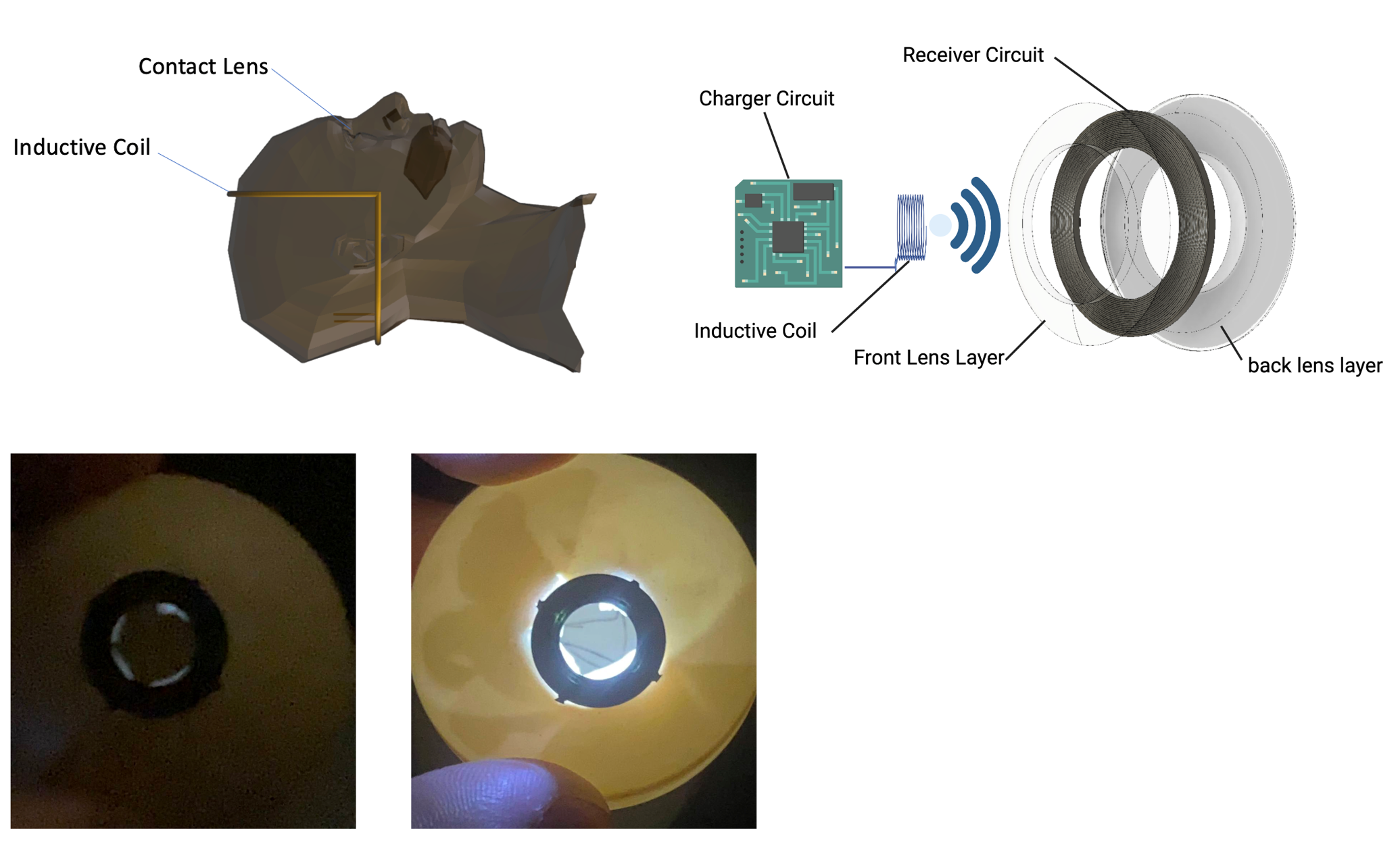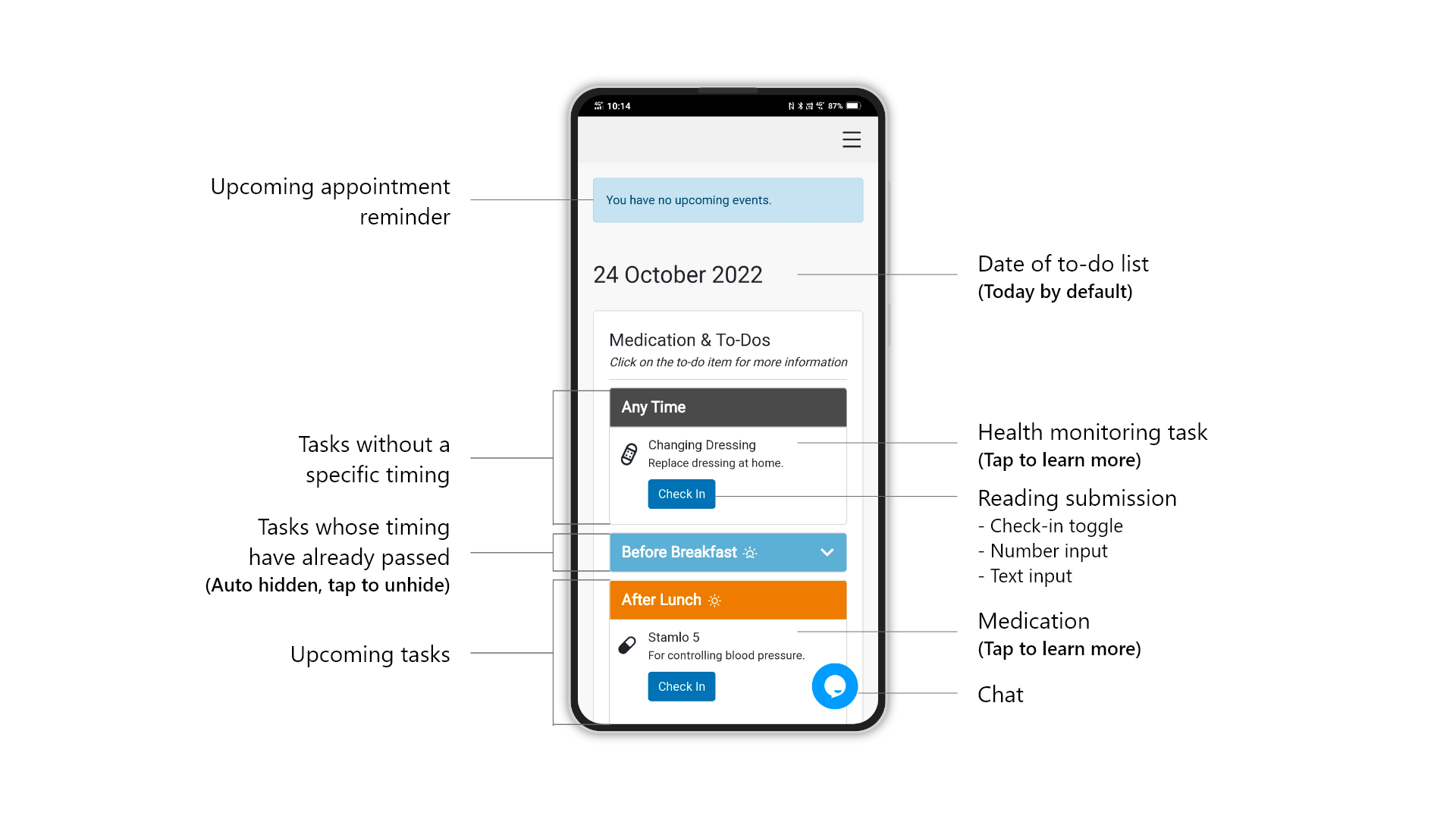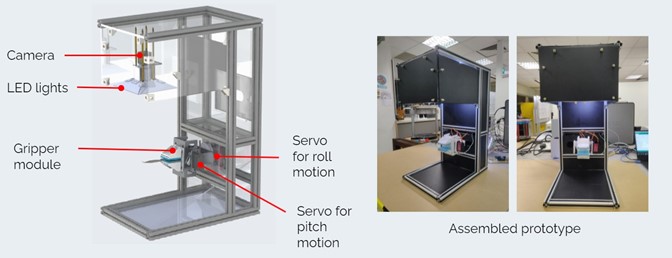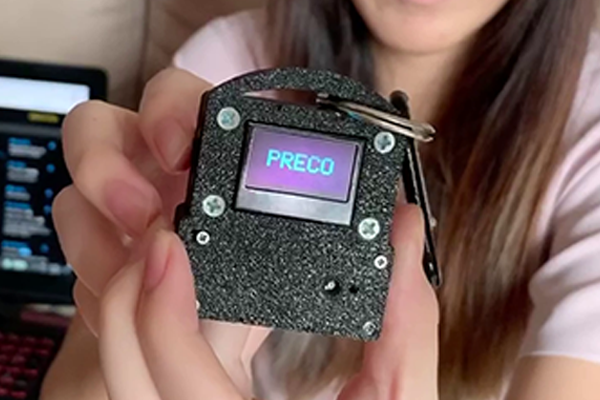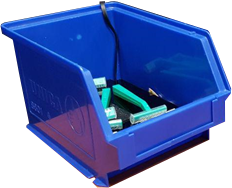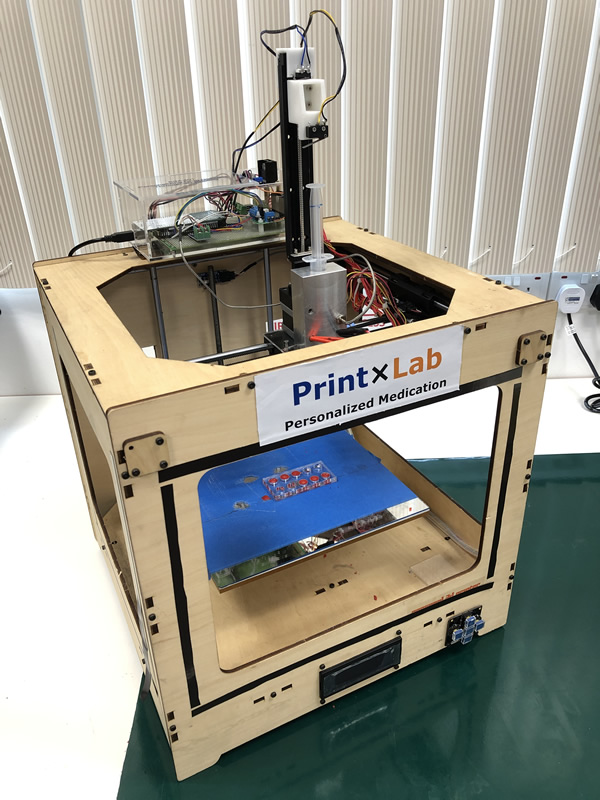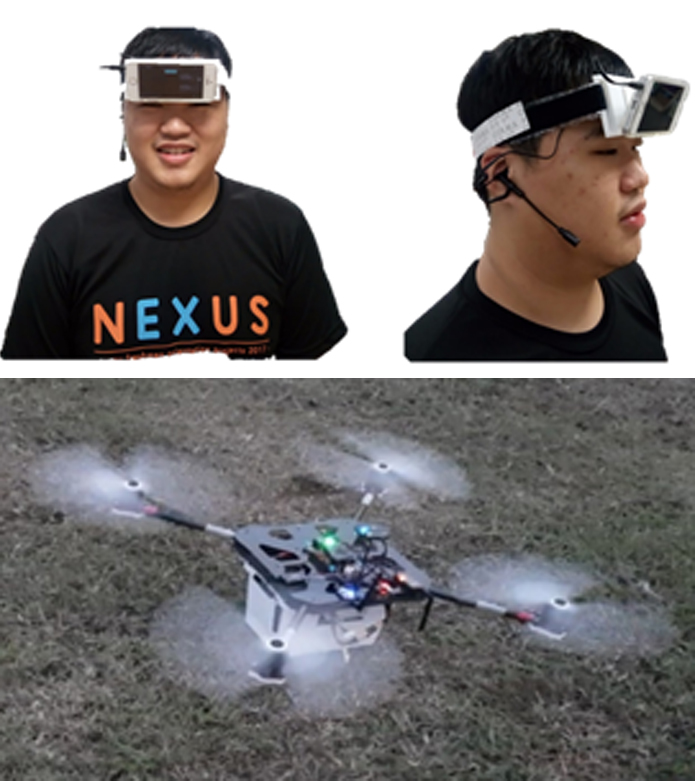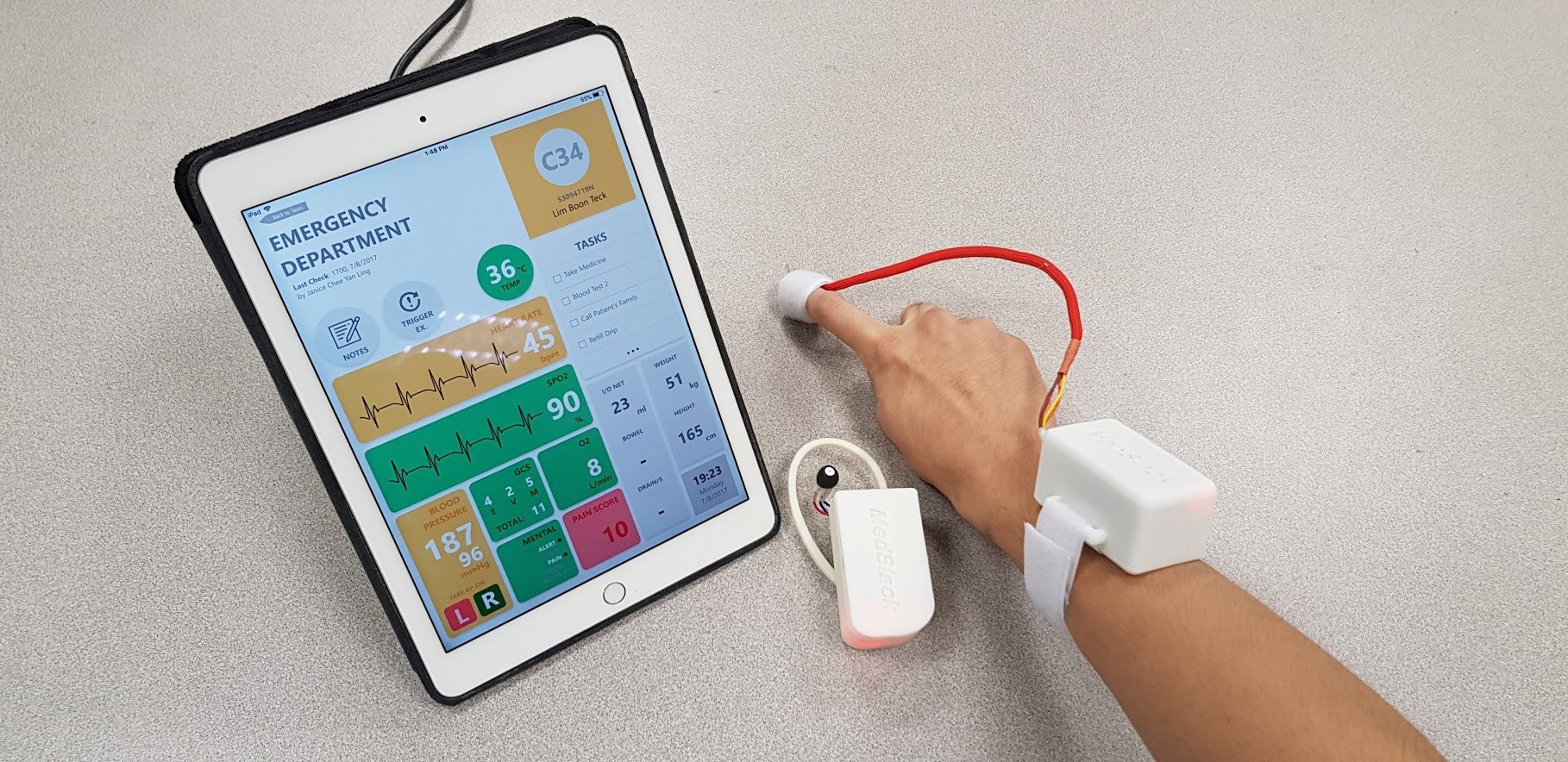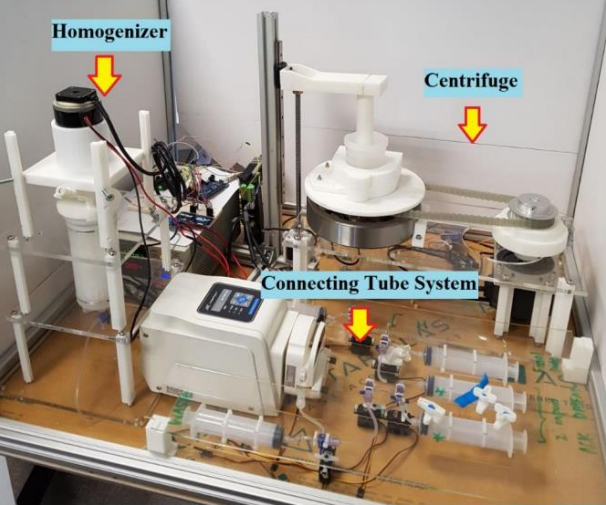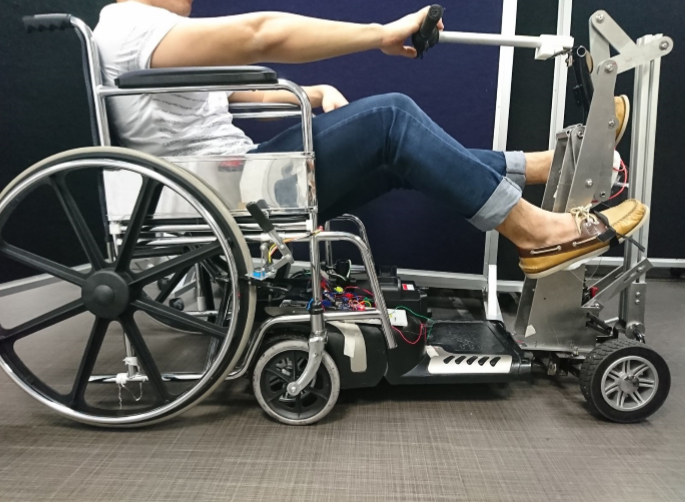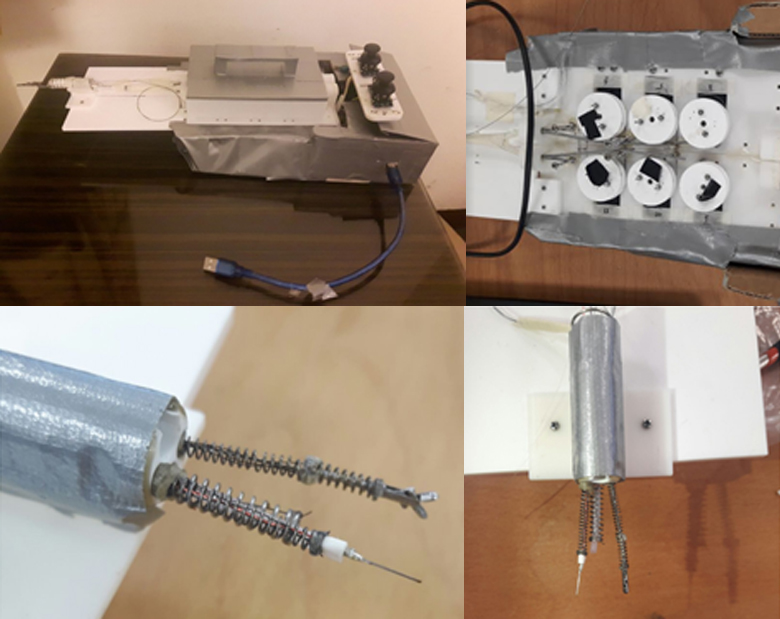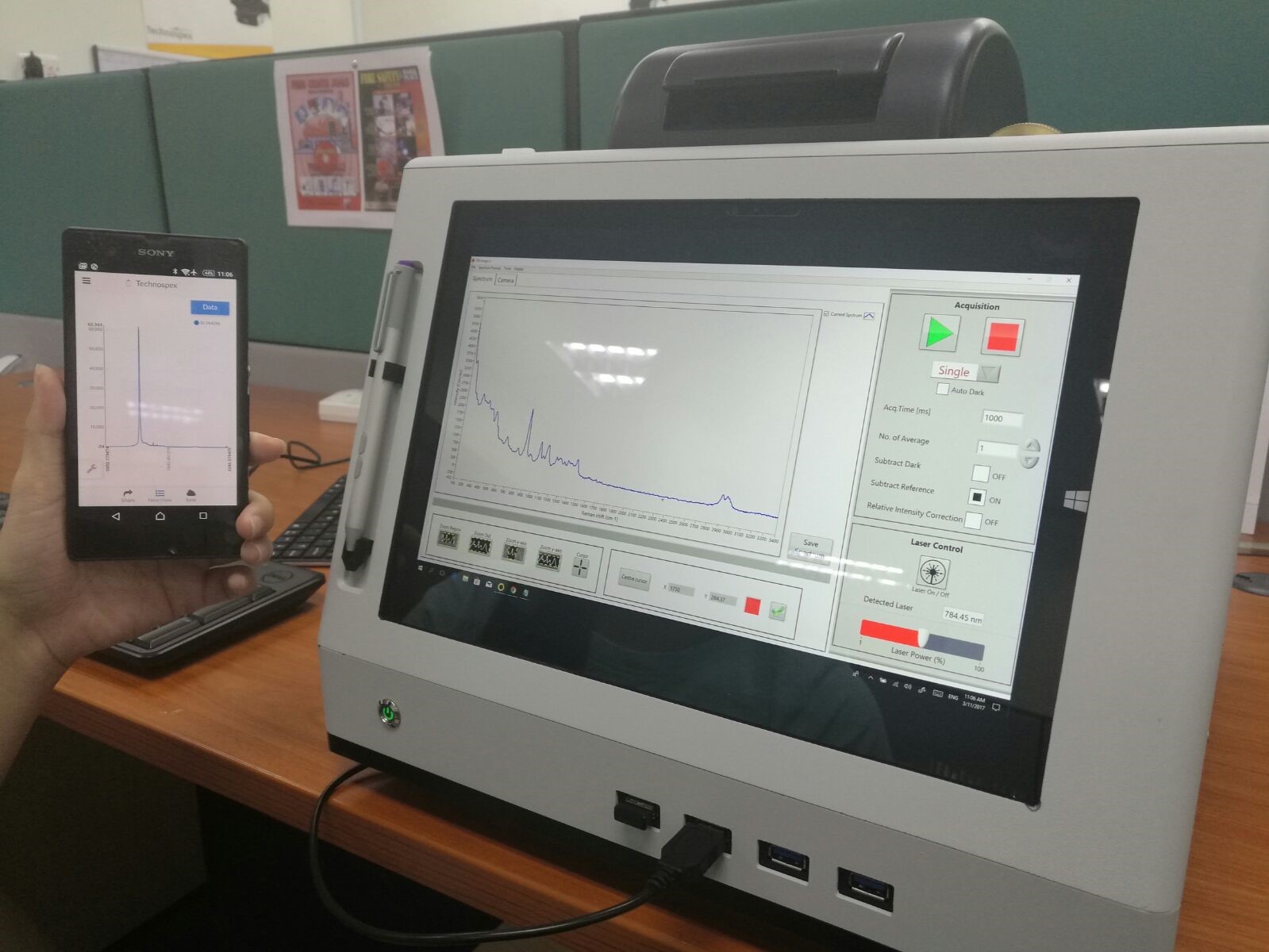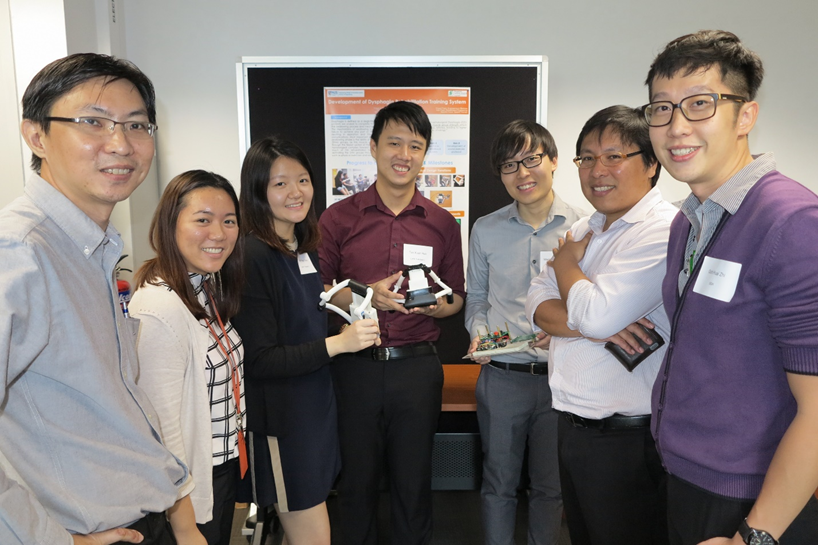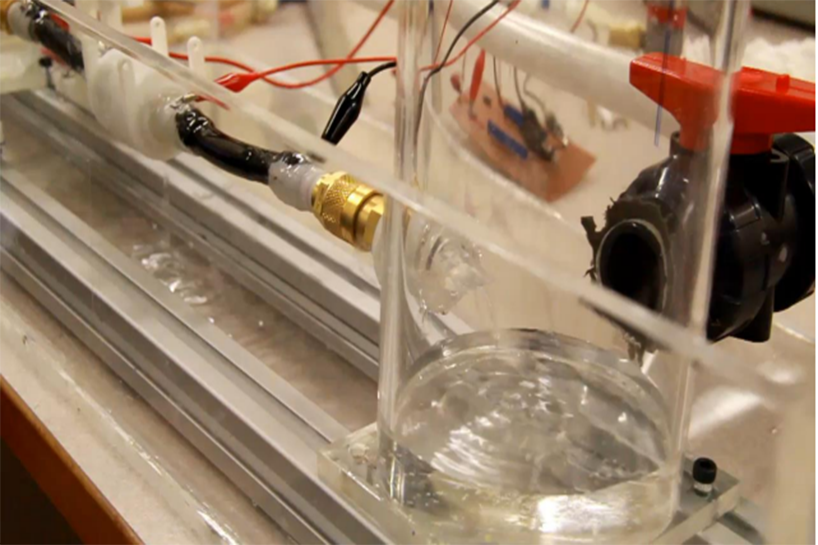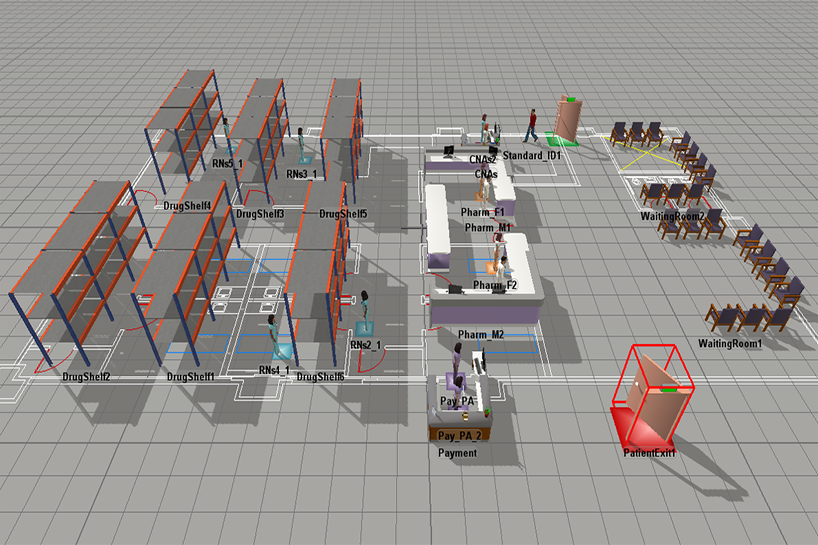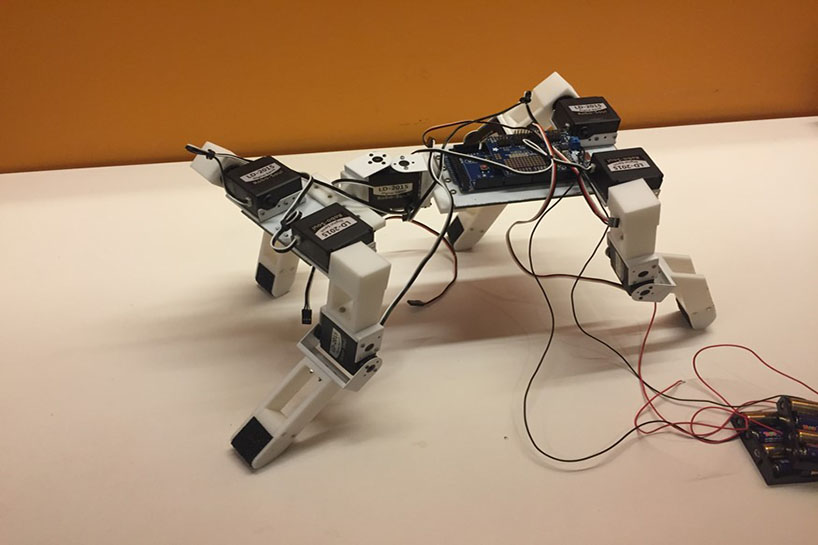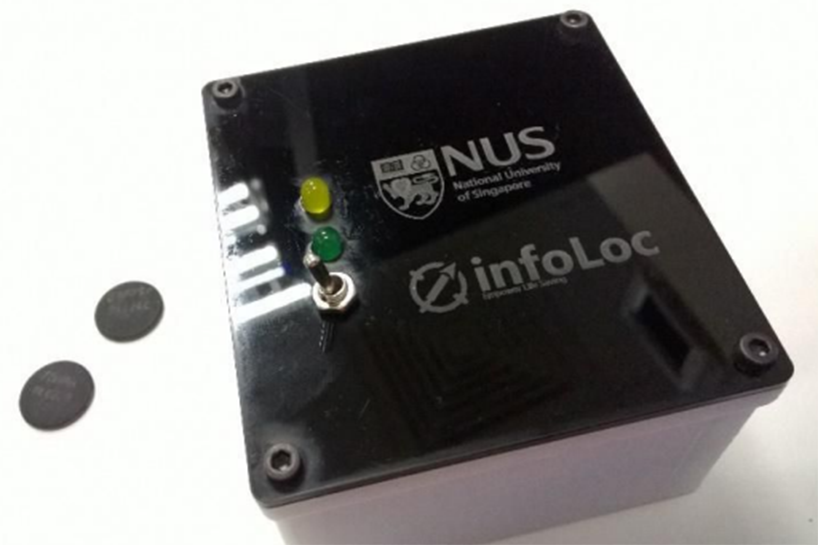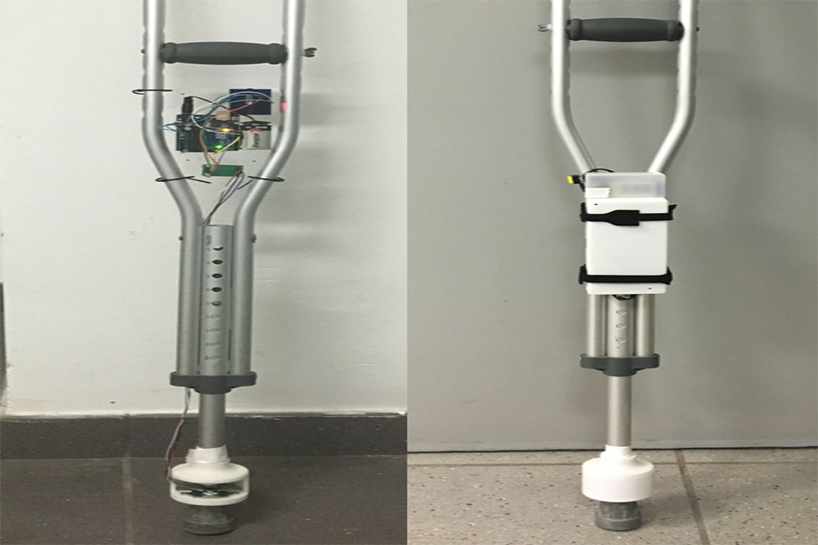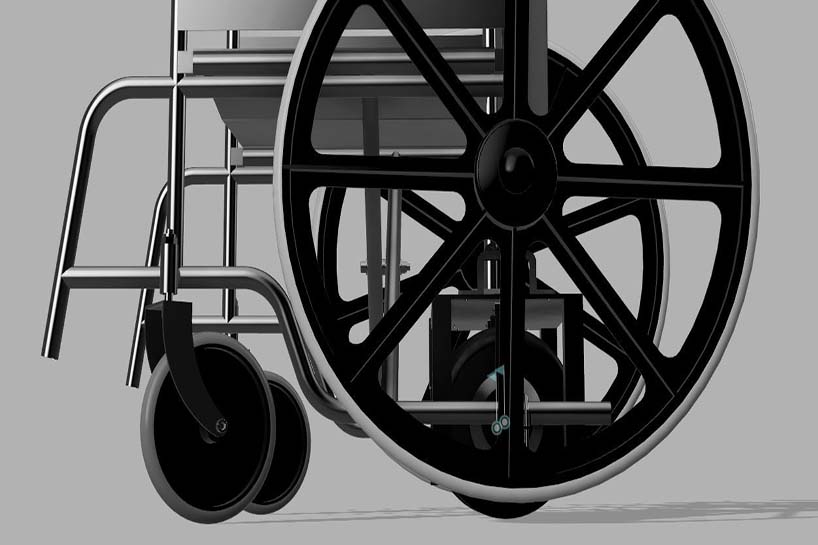Innovating for Better Healthcare
Projects in this theme aim to design better solutions to meet healthcare needs in hospitals and the community. Students learn from and work closely with healthcare professionals and academic staff to conceptualise, design, test, and develop healthcare and medical technologies.
Existing training devices for nasogastric tube (NGT) placement for infants around 4 months old who struggle to obtain nutrition orally suffer from lack of anatomical realism and tactile sensation. This and other shortcomings make it difficult for caregivers to adequately prepare for NGT placement in real-life situations. To address these issues, we developed a training mannequin that provides enhanced anatomical accuracy and realistic tactile sensations along with responsive feedback mechanisms to effectively mimic patient distress.
Clinicians face challenges in interpreting cardiotocography tracings in the Obstetric and Gynaecology scene due to numerous variables that must be analysed quickly, leading to high cognitive demand and variability interpretation. To address this problem, we developed IntelliBeats, a system designed to enhance diagnostic accuracy and reduce variability while preserving clinical autonomy. User testing of our solution with clinicians at the National University Hospital showed a reduction in diagnostic time and an increase in accuracy.
While normal labour progression differs largely among patients, there is presently no way to define labour dystocia (i.e. slow or abnormal labour) in an objective, clinically-proven manner. Clinicians have to make subjective judgement based on their professional experience, which may lead to an incorrect conclusion that a patient cannot undergo vaginal birth. To address this problem, we have developed MaternAI which a hybrid knowledge-based clinical decision support system to aid clinicians in antenatal care where mode of delivery predictions are highly important for a patient's birth planning.
In this project, we designed a realistic abdominal task trainer to enhance medical students' palpation skills in picking up abnormal liver consistencies and enlargements, thereby increasing their confidence in conducting abdominal examinations.
This project aims to develop an in-vivo bidirectional selection system to allow directed evolution for bio switches with minimum loss of variance.
This project aims to optimise workflow processes for healthcare delivery at home.
This project aims to address the weight issue and the lack of sufficient workspace that MIC@home nurses experience with the current mode of transport for their equipment by providing nurses with lightweight luggage under 10kg, that has specialised drawers for time-efficient access to medical equipment, a deployable workstation and a stable and reliable IV drip stand.
Innolax is an innovative natural laxative that enhances healthy gut bacteria and improves liver detox to aid patients suffering from chronic constipation.
This project aims to design an automated solution in the form of a controlled guided system which as a whole, has the key technical capability of providing safe administration of critical physiotherapy interventions for infants diagnosed with impaired motor function, specifically targeting upper and lower limb movement.
This project aims to alleviate the socioeconomic effects of an ageing population by developing an autonomously locomotive robot buddy for elderly living alone/non-familial/non-friendly persons in an urban household for purposes of remote monitoring, socially facilitation and assistive care.
This project aims to solve visualisation difficulties that undergraduate dentistry students face in using 2D static cone-based computer tomography (CBCT) scans for making decisions in impacted canine treatment.
A seamlessly designed single-hand tool that empowers orthodontists with autonomy while offering real-time guidance during miniscrew insertion, leveraging advanced angle detection software.
In this project, we designed a guide to provide stability for current contra angle hand drivers (CAHD) to help orthodontists insert miniscrews more accurately and precisely for orthodontic miniscrew surgeries.
To address visualisation and placement challenges when orthodontists insert temporary anchorage devices (TADs) in patients' jaws due to restrictive insertion sites, we developed a radio-opaque TAD guide for swift, precise positioning and securement of the insertion site location and angle.
This project aims to promote and cultivate a more mentally resilient student population by lowering the friction to the adoption of research-backed methods, through a blend of physical sensory experiences provided by the ZenBox, and holistic digital approach from the ZenApp.
This project aims to improve the efficiency of bird health monitoring, reduce human reliance, and enhance the overall operations of animal care by developing an intelligent IoT system, Avehealth-Stariot, to automatically track and remotely monitor the birds' wellbeing.
The main objective of this project is to design a home-based Deep-Inspiration Breath Hold (DIBH) trainer to allow breast cancer patients to master the technique prior to their radiotherapy sessions, thereby reducing the probability of cardiac irradiation and cardiovascular disease.
This project aims to enable individuals with upper body disabilities to eat Asian cuisines independently and enjoyably using an autonomous feeding robot.
This project aims to automate human porter’s job of pick-up, transport and drop-off of medications at respective wards, as well as accurately identify and deliver the correct medications from the pharmacy to the respective wards while securing medications to prevent any interception from unauthorized personnel during portering duty.
The aim of the project is to engineer microbes with the capability to record events into DNA, in a digital manner, controlled by light. This would not only serve as a proof of concept for DNA as a next generation data storage medium; but would also serve useful applications for molecular recording and living biosensors.
In this project, we designed a pre-crawler device that is used by infants with Cerebral Palsy to conduct crawling training at home and in clinical settings.
This project aims to address the high costs and complexity involved in T-cell manufacturing by designing a modular and automated bioreactor that integrates multiple process of the manufacturing process and produces CAR-T cells of high quality and quantity.
In this project, we designed a non-intrusive illumination solution for vitrectomy to reduce surgical trauma and surgical difficulty.
In this project, we designed a wearable abdominal examination training equipment that simulates abdominal abnormalities to help medical students practice carrying out realistic abdominal examinations on standardised patients.
This project aims to design a system that can harvest stem cells at high and consistent yield, reduce number of skill operators required, and complies with guidelines stipulated by health authorities.
This project aims to improve the efficiency of monitoring patients’ ECGs by developing a wearable device to allow for continuous monitoring and implementing an artificial intelligence diagnosis system to support doctors in their decision-making process.
This projects aims to reduce the manpower required for physiotherapy by allowing physiotherapists to monitor multiple patients during the same physiotherapy session, allowing them to give more attention to those struggling with exercises.
The project aims to design a simple-to-use autonomous table-top robot that strengthens the social connectivity between families while helping older adults reduce cognitive degradation and physical frailty through health monitoring and skill and recreation-type functionalities.
This project aims to explore an exercise gaming solution to aid the semi-mobile elderly to optimise their participation in exercise and consequently improve their mobility.
In this project, we designed a care synopsis web app to overcome the challenges of effective communication between hospitals and patients.

In this project, we designed a portable cooling solution to allow for immediate intervention to intercept the onset of exertional heat stroke when soldiers are out in the field.
In this project, we created a rehabilitation solution for children with cerebral palsy and muscular dystrophy by utilising a motorised exoskeleton supported by a frame for repetitive motions.
Surgical instruments must undergo a rigorous process of cleaning, sterilising and inspection after surgeries to ensure their proper maintenance, increase longevity of tools and prevent health hazards due to contaminated tools. However, accounting of tool kits is often a labour intensive and mundane task which could be easily automated. This project aims to design a solution to identify defects and residues particularly in ophthalmic surgical tools using a combination of robotics and computer vision.
Patients who suffer from multiple chronic illnesses are required to consume numerous medications to manage their health condition. As a result, many of them especially the elderly have difficulties adhering to their complex medication regimen. To tackle this problem, we designed a device which can fabricate polypills with customised drug combinations and dosages so that patients only need to consume one type of pill once or twice a day instead of multiple pills in different dosages at different times of the day.
There is a need for a rehabilitation system that is convenient, independent and capable of offering personalised services while motivating patients to undergo their rehabilitation. Gaming in rehabilitation is one solution to meet this need. In this project, we developed a lightweight wearable device to potentially assist stroke and Parkinson’s disease patients in hand rehabilitation, especially with activities of daily living through gaming.
Patients suffering from diabetes currently need to monitor their blood glucose level constantly using invasive methods that may lead to risk of infection. On the other hand, those who have cardiovascular diseases need to check their blood pressure regularly using cuff-based techniques that cause inconvenience, discomfort, and do not provide real-time monitoring. To address these problems, our group designed a Tamagotchi-inspired and photoplethysmograph-based device for measuring blood glucose level and blood pressure that is portable and non-invasive.
An IoT-based inventory management system to automate logistics processes for medical consumables in hospitals.
Drug tablets and capsules sold in the market typically come in standard dosages. This makes it difficult for doctors and pharmacists to prescribe the precise dosage that is required based on the needs of individual patients, which leads to problems such as less-than-ideal duration between dosages or the need for patients to break large tablets into smaller doses that are neither definite nor predictable. In this project, we designed a device for on-site personalization of drug dosages that leverages on 3D printing technology but does not require the use of high temperatures which could negatively affect the performance of the drugs.
Human-on-chip (HOC), an integration of different functional organ-on-chip (OOC) modules on a common platform, is an emerging technology to replicate inter-organ interactions for drug development purposes. However, researchers have to redesign the HOC for different OOC combinations and flow configuration, which is time, cost and labor-intensive. The solution to mitigate the shortcomings of current HOC employs manipulatable HOC platform
Intrauterine growth restriction (IUGR) is one of the challenges in obstetrics as it is the second leading cause of perinatal morbidity and mortality in the general obstetric population. To address this, a minimally invasive miniaturized oximeter is developed to be implanted onto the umbilical cord. This device measures the oxygen saturation of arterial and venous blood and transmits the data to mobile phones for real-time monitoring.
MyResponder volunteers had raised concerns in terms of locating necessary medical equipment and supplies and time taken to locate them during an emergency situation. Our group recognised the problem and aims to promote early intervention and early access so that the victim can be attended to as soon as possible. To avoid traffic congestion, we utilized UAV as the mode of provision along with a wearable communication device to enable the MyResponder to communicate with paramedics directly.
In the National University Hospital (NUH) emergency department, staffs need to continuously monitor patients in order to diagnose patients timely and accurately, and administer appropriate treatment. However, due to resource limitations, the monitoring of patients may not be possible all the time. The solution is a scalable IoT system for continuous patient vital signs data collection and data analytics.
Adipose Stem Cells (ASCs) are an attractive and abundant source of Mesenchymal Stem Cells which have tremendous applicability in the field of repair and regeneration of chronically and acutely damaged tissues. Currently, the commercial systems used to isolate the ASCs are enzymatic and lack standardisation. Our aim is thus to develop a standalone system to be intuitive, easy to use for the medical staff, and able to overcome the shortcomings of the past models of the harvester.
After the stroke patient is discharged from the hospital, frequent gait training is necessary for the patient to quickly restore normal body functions. While doing their gait training, patients are still required to go about their normal lives but are limited by their mobility. Our solution is to make the gait training conveniently combined with a means of faster mobility for patients to continue their training whilst commuting.
The standard treatment of GCTs, require invasive curettage and the creation of a large cortical window for assessment. This technique includes risks such as bleeding, damage to bone and adjacent soft tissue, risk of fractures of the operated bone and significant post-operative pain and immobility. Using a snake-like robot has the advantages of minimally invasive surgery by effectively reducing the size of the cortical window needed for tumor removal.
Hand, Foot and Mouth Disease (HFMD) is prevalent in Singapore especially in childcare centres and diagnosis is mainly done through visual assessment. Currently, the only accurate methods of diagnosis available are done through tests in laboratories. The solution is to establish communication to transfer results to more accessible devices such as phones, expediting the conventional laboratory process of detecting the presence of the HFMD virus.
Oropharyngeal Dysphagia (OD) is a serious swallowing disorder that affects patients suffering from a wide range of diseases such as stroke, nasopharyngeal cancer and ALS. The team has developed a device to help patients to overcome OD via physical exercise. The team has won several accolades at NHIC Innovation to Develop Awards and NUS FOE Innovation and Research Awards.
This is a project aiming to develop a system capable of detecting the movement of the human eye-ball and extracting useful information such as the range of eye-ball movement, movement speed, head movement range, speed and frequency, etc. Such information will be useful in the field of medicine, where certain ailments of the eye can be diagnosed, monitored and rehabilitated
Only 10% of patients awaiting heart transplant are able to receive a transplant every year. Man-made mechanical circulatory support systems are being used in place of heart transplant to bridge this gap. In this project, students are designing an enhanced Left Ventricle Assist Device (LVAD) to support an ailing heart in maintaining normal blood circulation. The project develops a novel pump and power system for LVADs to minimize the risk of infections, allow patient specific customisation and reduce costs compared to existing devices.
Hand, foot and mouth disease (HFMD) is an infectious disease that affects children under the age of 5. The current detection methodology for HFMD includes laboratory testing which requires complicated sample handling and long turn-around times. To enable rapid and reliable detection of HFMD, this project is developing a point-of-care testing kit for usage in childcare centres and kindergartens. The developed prototype uses saliva as the biological sample and Surface Enhanced Raman Spectroscopy as the detection methodology.
Hospital pharmacies are tasked with serving a high volume of patients while managing a large inventory of drugs. Being one of the last stops in the healthcare service chain, pharmacies are especially susceptible to patient complaints when the waiting time is long. This project aims to reduce the patient waiting time to enhance the service quality in hospital pharmacies. The project uses human factor engineering and statistical tools to optimize the manpower allocation in pharmacies.
Cancer is one of the leading causes of mortality in Singapore. The current detection methodologies rely on cumbersome techniques which require laboratory equipment. In this project, students are developing a point-of-care diagnostic kit to facilitate low-cost and early detection of cancer. The project involves development of cost-effective platforms for separating plasma from blood sample and fabricating a microfluidic chip to quantify the concentration of cancer antigens in the sample.
This project is developing a novel compliant cat robot that can be used for search and rescue operations, entertainment purposes and military stealth. The quadrapedalled robot is designed to look like a cat, move like a cat and even behave like a cat. The project involves mechanical design, microcontroller programming and a communication module interfacing.
This project develops a system to enable faster rescue of casualties during an emergency situation. The team is using IoT based indoor localisation of casualties to assist firefighters in rescue operations. The system uses low-energy Bluetooth beacons for indoor localisation. In addition, the system uses RFID and mobile application to provide access to the floorplan of the emergency area.
Measuring patient vital signs is an integral part of the healthcare routine in the emergency department of hospitals. However, due to manpower constraints, patients vitals are not measured at regular intervals thereby compromising on essential information required for continuous health monitoring. This project develops a device for automated, continuous and accurate measurement of patient vital signs crucial to emergency department, namely – temperature, SpO2, blood pressure and heart rate. The project uses non-invasive sensors powered by IoT technology to enable easy access to patient vitals for the healthcare providers.
Urinary incontinence – defined as the loss of bladder control is a common problem among children and elderly. The HAPee team is developing a solution that enables children suffering from urinary incontinence to regain control of their bedwetting condition. The developed prototype – HAPee – enables patients to non-invasively measure the urine volume in bladder and triggers an alert when the bladder is full.
Weight bearing refers to amount of weight a patient puts on a leg that underwent surgery. The current methods of measuring weight bearing such as force plates, bathroom scales and limb load monitors are expensive, designed for lab usage and do not provide real time feedback after training. Taxeia is a partial weight bearing training device that uses biofeedback to provide real time monitoring during patient rehabilitation.
Electric wheelchairs provide a higher degree of independence compared to manual designs. However, electric wheelchairs are prone to frequent breakdowns and require regular maintenance. During the maintenance sessions, wheelchair users are left stranded at home unable to carry out their activities of daily living. This project develops a solution for the elderly to maintain their mobility while their electric wheelchair is under maintenance. The project team has developed a power add-on module to motorise the manual wheelchairs.



